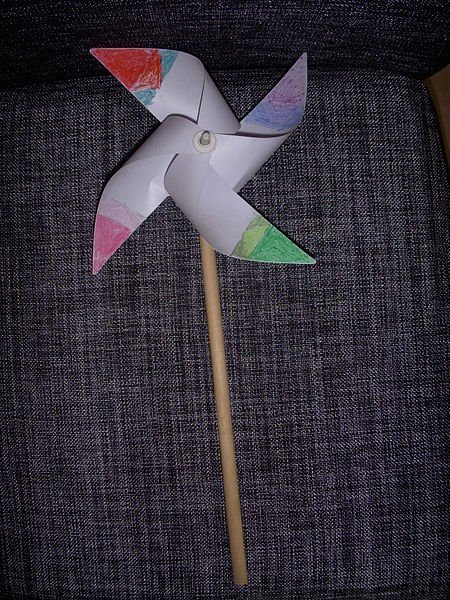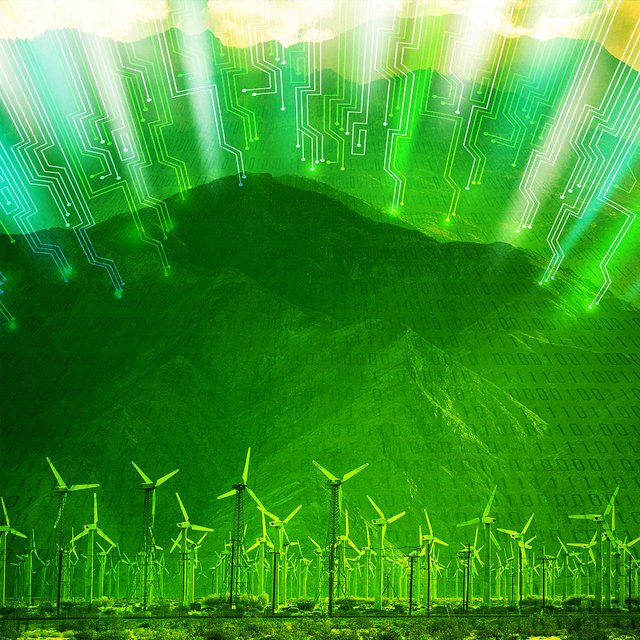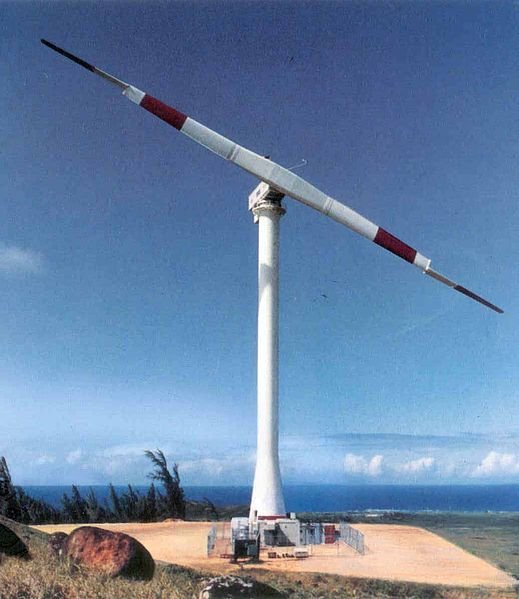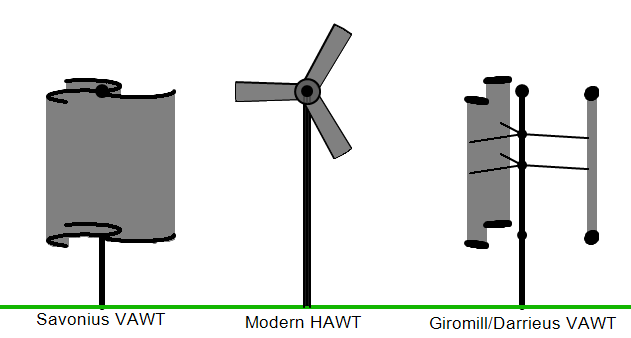Have you ever wondered why wind turbines have 3 blades
Besides food production and the likes, one of the main concerns of economies in our world of today is the production of energy or power or electricity. The reason being simple – the electricity is needed to drive the economy!
If not all, almost all aspects of human endeavor require devices or machines or systems that run on electricity (in whatever form) to make the processes easier, simpler, faster and more efficient (I bet you know what I am talking about). This need resulted in the creation of power generating plants and stations which initially run on fossil fuel and the likes. However, when the issues of global warming and pollution took the stage, we decided to source for cleaner and safer ways of generating electricity – renewable energy.
Solar panels, biomass plants, geothermal or hydroelectric plants and wind turbines “litter” the planet as man thrives to reduce the dependence on fossil fuel for power generation for a safer earth. Did I just mention wind turbines? Oh yes, these ones are the subject of discourse for today.
Although not as popular as its solar counterpart, wind turbines are also a good way of generating electricity from renewable source – wind.

Remember this toy? image source Wikimedia commons
Wind, which is air in motion possesses energy (kinetic) that can be harnessed for the generation of electricity. I remember when we were young, we used to make these turbine toys which we run with while holding it up. As we run, the toy begins to spin and the faster we run, the faster the fan rolls and even sometimes when there is a good amount of wind, all we need to do is hold it up and the wind does its job. Did I bring back memories?
Just like the toy, the wind turbine also applies the same principle to generate electricity – the turbine blades are set up such that as they encounter the wind (air in motion), they would spin. This spinning of the blades is what is needed to generate the electricity.
Simply put, the blades of the turbine are connected via a shaft to an electrical generator which would produce electricity as the turbines spin (simple and sweet!). Although this time around, we don’t need to run with it before it will spin. It is more of like the reverse of a ceiling or standing fan – in a ceiling/standing fan, you supply electricity to make it spin but in a wind turbine, you spin the blades to generate electricity. Simple and sweet .
Just to clear doubts (if there be any) electricity generation by the generators in the wind turbine is not different from those in the hydro turbines, gas powered generators and the likes, they all make use of the principle of electromagnetic induction.
Contrary to what some of us might think, the wind turbine has been in use for a long time. Maybe not for electricity generation but they have sure been available in old times for pumping of water and grinding of grains. These types of turbines are not really designed like the ones we have around today. They have a lot of blades and are very large in contrast to the common turbines we have today that have just a few blades (mostly 3) and are made to be very tall mast with long blades. The blades of the wind turbines of today are designed just like the wing of an airplane (the aerofoil shape) this is done so that the blades can “catch” my terms the wind and thus rotate. This wind “catching” is as a result of air flowing faster over the upper part than under it which creates a pressure difference and thus the blade (or wing in the case of the airplane) lifts.

image source: flickr
In recent times, many countries have adopted the use of wind turbines to generate electricity either for private, commercial or for the sake of adding to the grid. Before one can choose to install a wind turbine, a lot of considerations need to be made; one of which is the availability of “good” wind in that location. In places as such, you would see a lot of wind turbines arranged in the field – this is called a wind farm.
Some things that fascinate me about the wind turbines include the height and the size of these things (I am referring to the big ones found in wind farms). I was watching a video the other day of a maintenance work being carried out on a particular wind turbine which involved cleaning of the blades of the turbine and it was funny albeit an amazing sight to behold. The man was “dangling” by a rope as he was wiping the blades with a cloth, it looked like a miniature man wiping the blades of my standing fan lol.
Talking about turbine blades, did you notice that most wind turbines (the ones common with wind farms) have 3 blades? Although there are wind turbines that have up to 4, 5 or even 6 blades, the most commonly and widely used turbines have 3 blades. This brings us to the point of discussion of today’s article – why do most turbines have 3 blades?
For a wind turbine to perform properly, there are a lot of considerations and conditions that need to be satisfied all of which are essential for the smooth and efficient operation of the turbine. The turbine has to be balanced, has to encounter the least drag possible so as to be able to spin as fast as possible to generate electricity and yet must not exceed the sound barrier so as not to be too noisy for the environment. Also a phenomenon known as gyroscopic precession must not occur or else the lifespan of the system is at stake.
Balance – as simple as this sounds, it is one of the most important criteria for all structures. All forces acting on the structure (which in this case is a wind turbine) must be in equilibrium so that the structure can stand erect and not collapse.
Drag – this force acts to retard the movement of a body through a fluid (in this case, the turbine blades in the wind). Just like the airplane wings, the movement of the turbine blades in the wind would experience resistance. For a turbine to perform optimally, there should be as little drag as possible. More blades would mean more drag.
Blade length – The longer the blade, the higher the tower would need to be so as to allow for the blades to have a good clearance from the ground and I begin to wonder the costs that would be incurred if the blades are extremely long
Speed – In order to generate electricity from a wind turbine, the blades need to rotate at a particular speed so as to be able to turn the shaft cum the generator coil. This turning speed needs to be fast enough yet not too fast
The sound barrier – If you take a length of rope and whirl it round and round you would notice it making the “whirling” sound. The faster you whirl it, the louder the sound. Now let’s consider the case of a wind turbine – the turbine shouldn’t be too fast such that the sound it would generate would be too disturbing for the surrounding environment or even going as far as breaking the sound barrier (something related to the speed of sound)
Deciding on the number of blades suitable for the wind turbine has to take into consideration these criteria (and a lot of others) to arrive at the ideal number of blades. Let’s take a look at some numbers.

Two blade wind turbine. Image source: Wikimedia commons. Public domain
One blade – Aerodynamically, one blade is perfect because the system would experience the least drag (only that blade is experiencing the resistance) which would enable the turbine to attain speeds good enough to generate a reasonable amount of power also, using one blade on the turbine would really help to cut the cost of production (as you would only be producing one blade per turbine) if not for one major setback – balance. One blade on the turbine would definitely result in the imbalance of the set up and thus, efficiency and output would be greatly affected. I wonder if the turbine would last a day due to the lack of equilibrium.
Two blades – Aesthetically, one would agree to have this number of blades and the fact that the number of blades is not also much is still a positive for the cost of production. One great disadvantage of using two blades is the concept of gyroscopic precession. The effect of this is such that the blades tend to deflect and may result in the wobbling of the system which is not safe for the system.
*Three blades – most turbines we have around have three blades and this got me pondering. Although three blades on a turbine is not “the perfect design”, it is somehow, the best bet. It is the number of blades that have been able to minimize the disadvantages and also has a niche on the advantages. Compared to a 3 bladed design, more blades would mean more cost (of course it would cost less to produce three blades instead of four), more drag which would definitely slow down the system and if you would want to increase the speed to compensate for that, you might be toying with the sound barrier (the turbine would be making unpleasant noise due to its high speed) which is not a good one if you ask me.
Looking at all these, you would see that more blades would only introduce more drag issues for the system and therefore a setback in the efficiency of the system. Although there are turbines that have (one), two or more than three blades, these ones are produced based on some criteria that would accommodate for the disadvantages they may present. Three blades in the wind turbine is not so much of the perfect number, it is more of like a number that helps attain a good level of efficiency and also having the least disadvantages.
CONCLUSION
Wind turbines are awesome machines and apart from the beauty it adds to the environment, it is a means of generating green energy i.e. energy that is safe for the environment. Their height and the amazing length of the blades are one of the few things that amaze me about these turbines. The fact that they are not widely known and used in this part of the world makes it more fascinating a sight to behold.

Different types of wind turbines Image source: wikimedia commons public domain
There are numerous designs of wind turbines and a variety of blade numbers all over. In the race of numbers, the number 3 is in first place when it comes to wind turbines and by now, I think we all know why.
In the nearest future however, we might be seeing new designs of turbines which could prove to be more efficient than the ones we have around. You never can tell. we already have vertical axis turbines of different designs and functions.
In the meantime, I would rather just sit back and enjoy the awesome view of 3-blades wind turbines in the sunset
I will be featuring it in my weekly #technology and #science curation post for the @minnowsupport project. You will also have the chance to win 50 STEEM right from my own wallet!
Wish not to be featured in the curation post this Friday? Please let me know. In the meantime, keep up the hard work!
If you have a free witness vote and like what I am doing for the Steem blockchain it would be an honor to have your vote for my witness server. Either click this SteemConnect link or head over to steemit.com/~witnesses and enter my username it the box at the bottom.
I wish you all the best here on the Steem blockchain.
Thanks
Great write bro.... This is more like it.
An interesting read by all ramifications.
Thanks for the kind comment. Its nice to be back to writing after such a long break
This post has been voted on by the SteemSTEM curation team and voting trail in collaboration with @curie.
If you appreciate the work we are doing then consider voting both projects for witness by selecting stem.witness and curie!
For additional information please join us on the SteemSTEM discord and to get to know the rest of the community!
This is quite an interesting write up...thanks for this
thanks for reading through
Wind turbines are not as popular as its renewable counterpart- the solar energy. But it is an amazing source of energy.
You are right on that one. Wind turbines although they have been around for long, unfortunately do not have popularity as the solar panels. I guess one reason is because wind is quite unpredictable or not so reliable as the sun. What do you think?
In Nigeria, we have little wind compared to other countries. But what we lack in the wind, we have it triple in the solar insolation :)
Congratulations @rharphelle! You received a personal award!
Click here to view your Board of Honor
Congratulations @rharphelle! You have completed the following achievement on the Steem blockchain and have been rewarded with new badge(s) :
Click here to view your Board of Honor
If you no longer want to receive notifications, reply to this comment with the word
STOPDo not miss the last post from @steemitboard:
Congratulations @rharphelle! You received a personal award!
You can view your badges on your Steem Board and compare to others on the Steem Ranking
Vote for @Steemitboard as a witness to get one more award and increased upvotes!